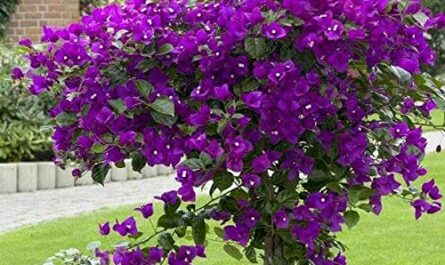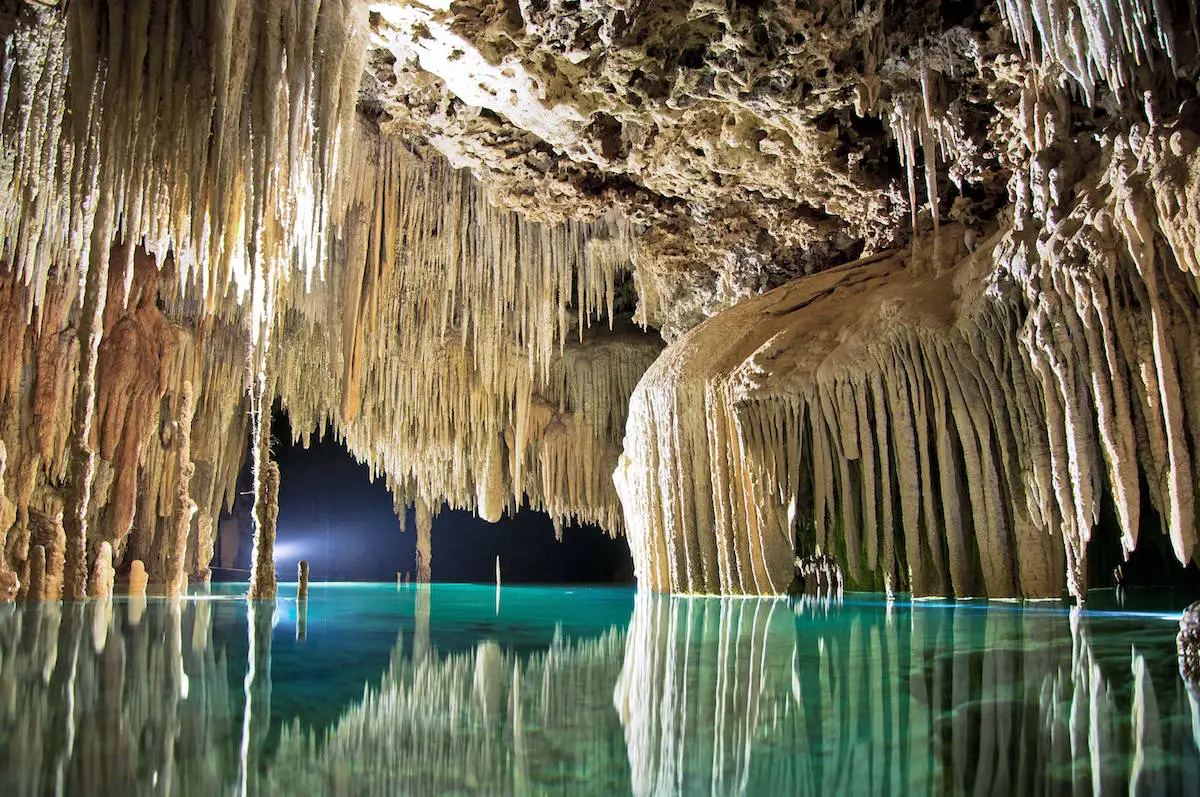Embark on a mesmerizing journey into the enchanting world of fungi with ’12 Colorful Mushrooms‘. This curated collection showcases a stunning array of mushrooms, each boasting vibrant hues that paint nature’s canvas with an extraordinary palette. From brilliant reds to electric blues, these mushrooms captivate with their vivid colors, bringing a touch of magic to the forest floor. Explore the intricate details of each species, marvel at the delicate patterns, and immerse yourself in the breathtaking beauty that nature has crafted.
Thank you for reading this post, don't forget to subscribe!12 Colorful Mushrooms of Nature’s Beauty
Ghost Mushroom: The Brilliant Spectrum of Colorful Mushrooms
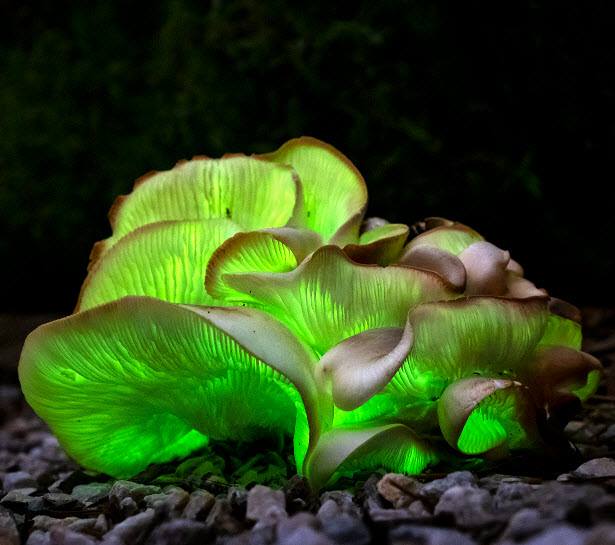
The Ghost Mushroom, also known as Omphalotus nidiformis, stands out as one of the most unique and beautiful fungi globally. Renowned for its subtle luminescence, this mushroom creates a mysterious tapestry in the darkened woods.
The Ghost Mushroom typically boasts a medium size with a lantern-like structure, featuring an expanded cap and a slender stalk. The cap can reach diameters of approximately 5-15 cm, displaying a distinctive pale blue-green hue. The underside of the cap is often black and illuminates in darkness.
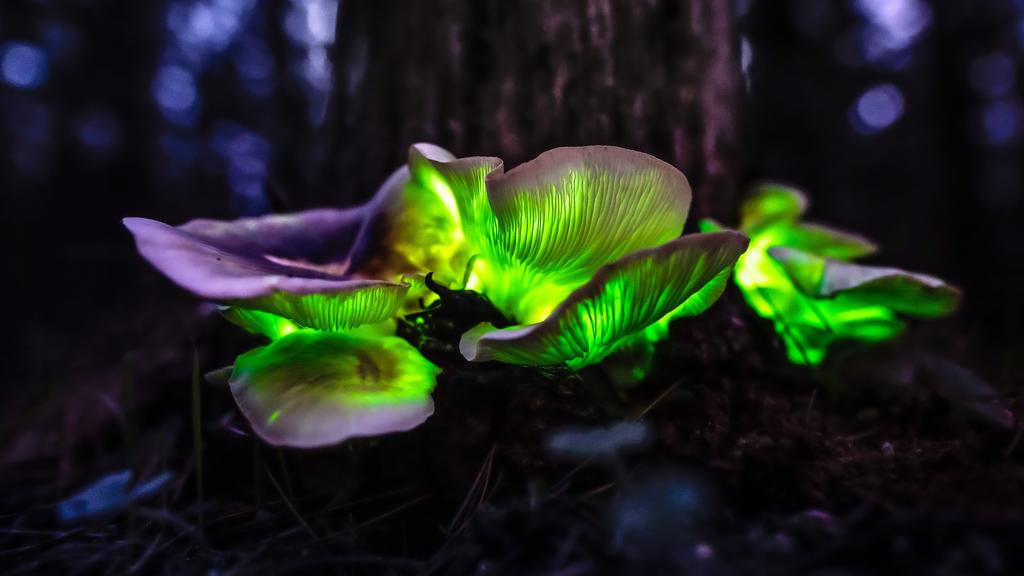
The most remarkable aspect of the Ghost Mushroom is its extraordinary luminescence. While the mushroom remains inconspicuous in daylight, it starts emitting a peculiar greenish light in low-light conditions. This phenomenon evokes images of dreamlike lanterns in the forest.
Ghost Mushrooms are commonly found in damp forests along streams or open grasslands. They thrive in temperate environments and typically emerge during autumn and early winter. Quiet, natural settings are where you are likely to encounter the special allure of the Ghost Mushroom.
Rhodotus palmatus

Rhodotus palmatus, commonly known as the Pink Rosette, is a captivating mushroom celebrated for its stunning appearance and distinctive pink coloration. This unique fungus adds a touch of elegance to its natural habitat.
The Pink Rosette features a medium-sized, fan-shaped cap with an undulating margin. The cap’s surface is smooth and ranges from pale pink to vibrant magenta, creating a visually striking and beautiful display. As the mushroom matures, the cap expands, revealing its unique rosette structure.
The stalk of Rhodotus palmatus is typically short and off-center, arising from the base of the cap. It may have a pinkish hue, complementing the overall color scheme of the mushroom.

One of the most distinctive features of Rhodotus palmatus is its pink gills, which run down the stalk and contribute to the overall pinkish appearance. The gills are densely packed and add to the mushroom’s aesthetic charm.
Rhodotus palmatus is commonly found growing on decaying hardwoods, particularly on the stumps or fallen logs of deciduous trees. This mushroom has a preference for well-shaded, damp environments, and it thrives in forests with high humidity levels. Look for the Pink Rosette during the late spring to early autumn months when it is most likely to fruit.
Lactarius indigo
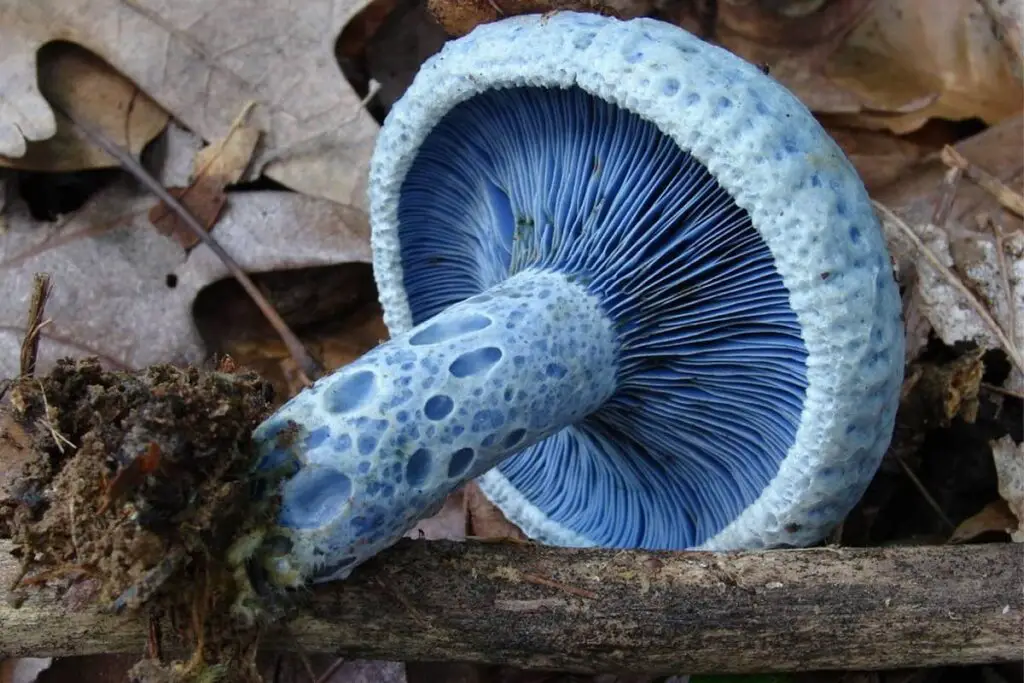
Lactarius indigo, commonly known as the Indigo Milk Cap, is a mesmerizing mushroom renowned for its vivid blue hue and intriguing characteristics. The medium-sized cap features a striking indigo color, making it easily distinguishable in the forest undergrowth. The gills, which release a milky blue latex when injured, contribute to the mystique of this species.
Found in both coniferous and deciduous forests, the Indigo Milk Cap forms mycorrhizal associations with various tree species. It particularly thrives in North American and European woodlands, emerging during the late summer and early fall.
While Lactarius indigo is not known to be toxic, it is not considered edible due to its acrid taste. This enigmatic mushroom adds a touch of brilliance to the forest floor, captivating the eyes of those fortunate enough to encounter its azure beauty.
Sarcoscypha coccinea
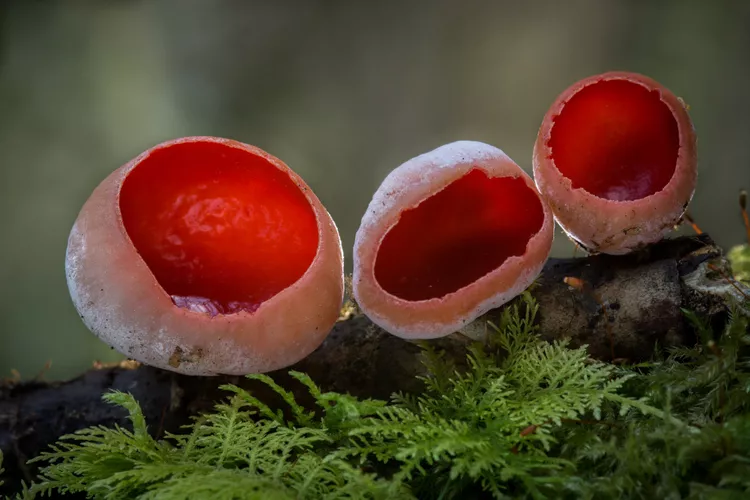
Sarcoscypha coccinea, commonly known as the Scarlet Elf Cup, is a captivating mushroom known for its vibrant appearance and distinctive cup-shaped structure. The scarlet-red, concave caps of these mushrooms resemble delicate cups, creating a visually striking display in woodlands and damp habitats.
Measuring approximately 1 to 4 centimeters in diameter, the Scarlet Elf Cup is relatively small, but its intense color ensures it stands out against the forest floor. This species is commonly found on decaying wood, particularly on fallen branches or logs, during late winter and early spring.
Encountering Sarcoscypha coccinea in its natural habitat provides a delightful spectacle, adding a splash of vivid color to the winter woodland landscape.
Amanita muscaria
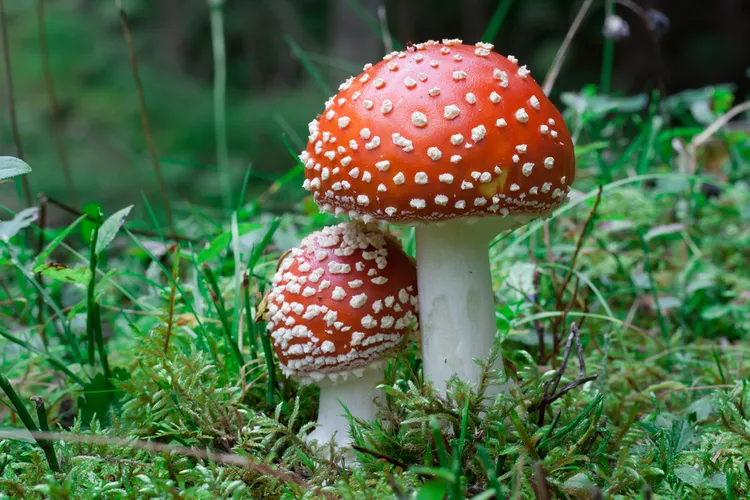
Amanita muscaria, commonly known as the Fly Agaric, is a toxic mushroom with distinctive features that make it easily recognizable. The large, umbrella-shaped cap, ranging from 5 to 20 centimeters in diameter, features a bright red hue adorned with distinctive white spots.
It is crucial to note that Amanita muscaria is toxic and contains psychoactive compounds. Consumption can lead to severe health issues, including gastrointestinal distress and hallucinations.
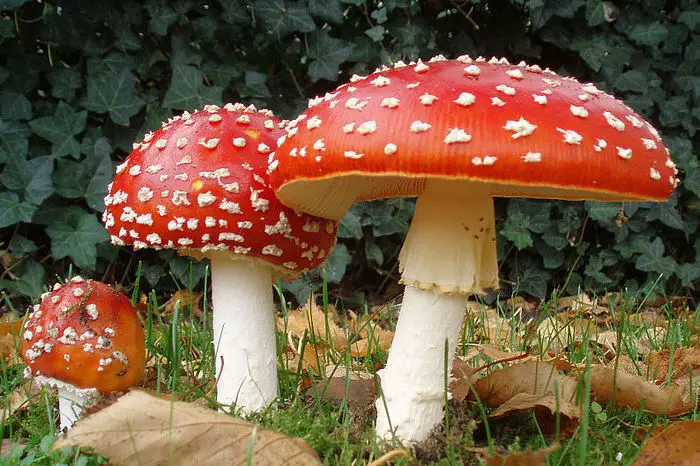
Found in a variety of habitats, including coniferous and deciduous forests, the Fly Agaric forms symbiotic relationships with certain trees. It emerges during late summer and early autumn, contributing to the enchanting atmosphere of woodland landscapes.
Amanita caesarea
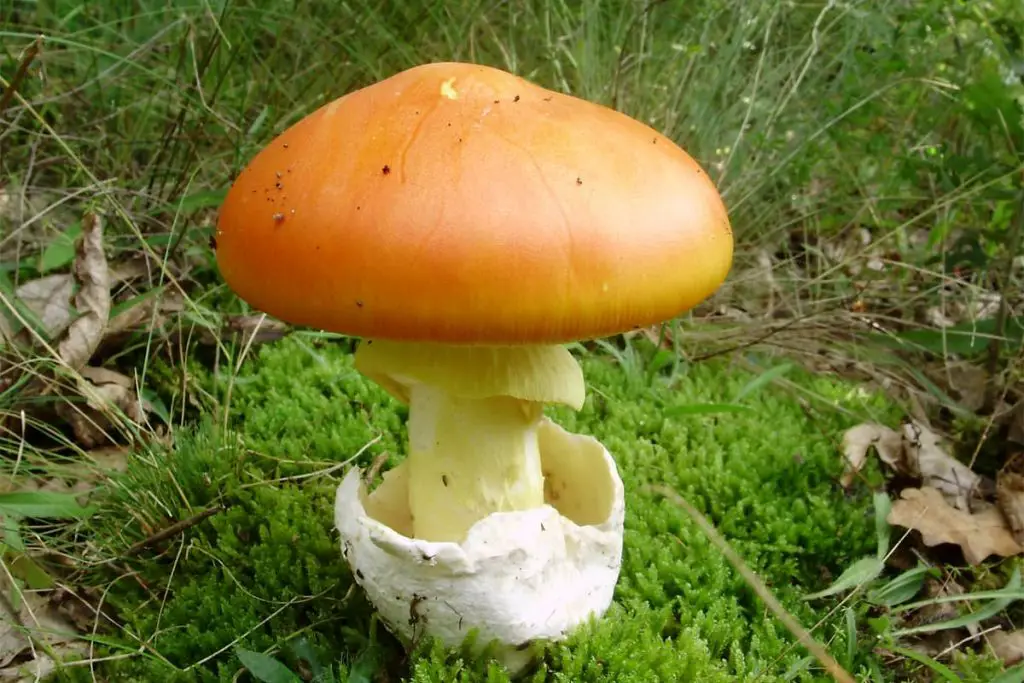
Amanita caesarea, commonly known as the Caesar’s Mushroom, stands as a regal and sought-after edible species among fungi enthusiasts. Its distinct appearance and culinary value contribute to its high regard.
The mushroom boasts a striking aesthetic with a medium to large-sized cap, ranging from 8 to 16 centimeters in diameter. The cap’s color varies from vibrant orange to red-orange, reminiscent of an imperial robe. The cap surface is smooth, often displaying a noticeable central bump.
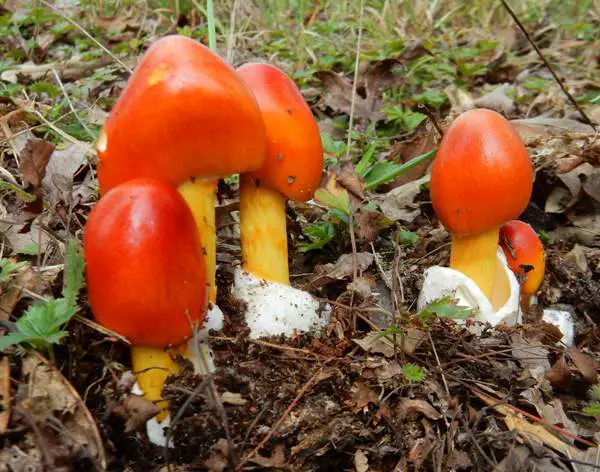
Found in broad-leaved and coniferous forests, the Caesar’s Mushroom forms mycorrhizal associations with various trees. It prefers well-drained soil and typically emerges during late spring to early autumn.
In contrast to many toxic Amanita species, Amanita caesarea is considered a choice edible mushroom. However, cautious identification is crucial to avoid potential confusion with toxic look-alikes.
Hydnellum peckii: Unveiling the Vibrant Charm of Colorful Mushrooms
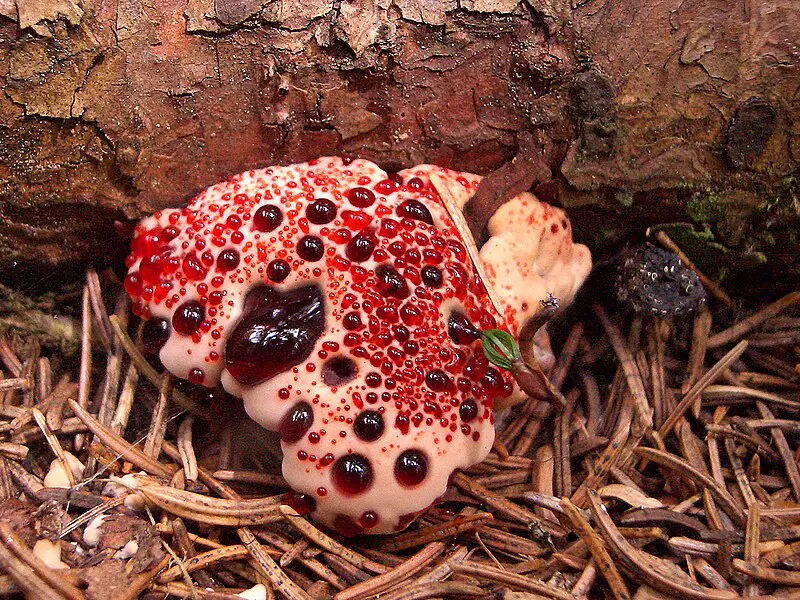
Hydnellum peckii, colloquially known as the Bleeding Tooth Fungus, presents a fascinating and peculiar appearance in the world of fungi. This small to medium-sized mushroom showcases a cap with a reddish-brown to orange hue, adorned with tooth-like structures on its underside.
Measuring approximately 2 to 7 centimeters in diameter, the Bleeding Tooth Fungus earns its name due to the droplets of red, blood-like liquid exuded by its tooth-like projections. This unique feature adds to its enigmatic charm.
Typically found in coniferous forests, Hydnellum peckii forms mycorrhizal relationships with various trees. It thrives in cool, damp environments and is often discovered among moss and leaf litter.
While Hydnellum peckii is not known to be toxic, it is considered inedible due to its tough and woody texture. Its distinctive appearance and “bleeding” characteristic make it a captivating discovery for those exploring the diverse world of mushrooms.
Clavaria zollingeri
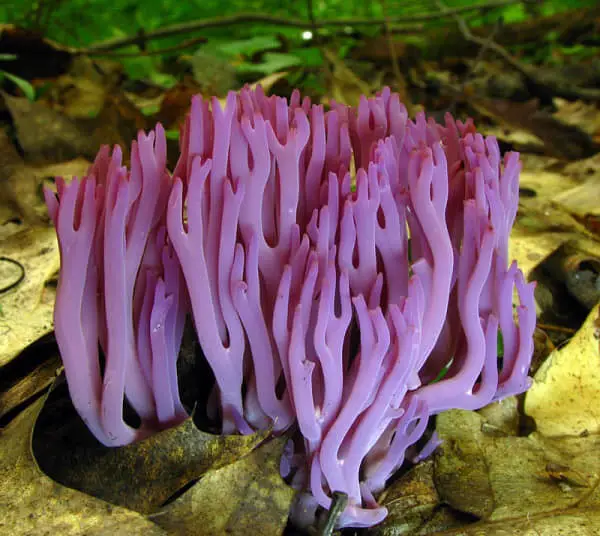
Clavaria zollingeri, commonly known as Coral Fungus, presents a captivating and unique appearance reminiscent of underwater coral formations. This mushroom belongs to the genus Clavaria and is recognized for its intricate structure.
Featuring a branching and coral-like structure, the Coral Fungus exhibits a range of colors, including white, cream, or light pink. Its delicate branches can reach heights of 5 to 20 centimeters, forming a mesmerizing spectacle in woodlands and forested areas.
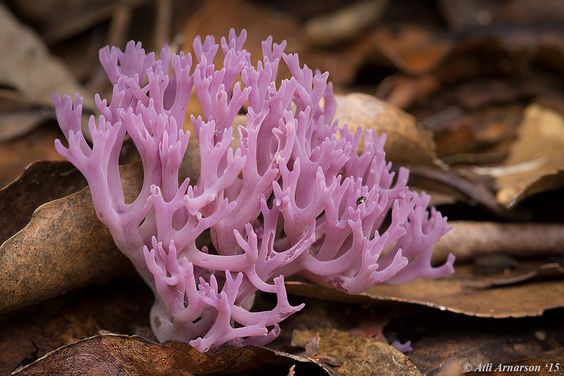
Coral Fungus is commonly found in coniferous and deciduous forests, thriving in moist and shaded environments. It often emerges from the forest floor, resembling a marine organism in a terrestrial setting.
While Clavaria zollingeri is not known to be toxic, it is not considered edible due to its tough and fibrous texture. The Coral Fungus adds a touch of enchantment to the forest landscape, inviting admiration for its intricate and otherworldly appearance.
Phallus Indusiatus

Phallus indusiatus, commonly known as the Bridal Veil Mushroom, is a distinctive and visually intriguing fungus. Recognized for its unique structure, this mushroom is found in tropical and subtropical regions.
The Bridal Veil Mushroom exhibits a phallic-shaped structure with a cylindrical stem and a cap that features a lacy, net-like structure known as the indusium or bridal veil. This veil can extend several centimeters below the cap, resembling a delicate skirt.
Typically, the mushroom is white or off-white, and the cap can measure around 2 to 5 centimeters in diameter. Phallus indusiatus is often found in woodlands, gardens, and areas with rich organic matter, especially in regions with warm and humid climates.
While this mushroom is not considered toxic, it is generally not consumed due to its strong odor, which resembles that of rotting flesh. The Bridal Veil Mushroom’s elegant appearance makes it a captivating find in the diverse world of fungi.
Lion’s Mane
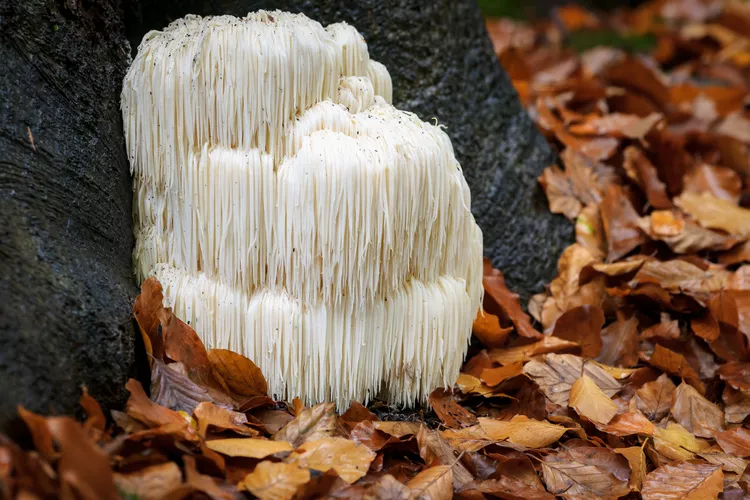
The Lion’s Mane Mushroom, scientifically known as Hericium erinaceus, is a remarkable and sought-after edible fungus. Its unique appearance resembles cascading white icicles or a lion’s mane, hence its name.
Characterized by long, dangling spines, the Lion’s Mane Mushroom can grow up to 20 centimeters or more in diameter. Its pure white coloration and shaggy texture make it stand out in woodland landscapes. This mushroom is often found on hardwood trees, particularly oak and maple, during late summer and fall.
Not only celebrated for its distinct flavor, the Lion’s Mane Mushroom is revered for potential health benefits. Rich in antioxidants and believed to support cognitive function, it has gained popularity in culinary and medicinal applications.
Lion’s Mane is generally safe to consume, and its delectable taste has made it a prized ingredient in various cuisines. However, proper identification is crucial when foraging for mushrooms to ensure a safe and enjoyable culinary experience.
Amethyst Deceiver: A Radiant Gem Among Colorful Mushrooms

The Amethyst Deceiver, scientifically known as Laccaria amethystina, is a captivating mushroom renowned for its vibrant and jewel-like appearance. This small to medium-sized fungus features a cap with a striking amethyst-purple hue, creating a visually enchanting sight in woodland settings.
Measuring around 2 to 7 centimeters in diameter, the cap has a convex shape that may flatten with age. The gills underneath maintain the same enchanting purple color, adding to the overall allure. The stem complements the cap, displaying a lighter shade of purple.
Found in both coniferous and deciduous forests, the Amethyst Deceiver forms mycorrhizal relationships with various trees. Its presence in the autumn months contributes to the colorful tapestry of the forest floor.
Its dazzling appearance makes it a delightful discovery for mushroom enthusiasts exploring the beauty of nature.
Guepinia helvelloides
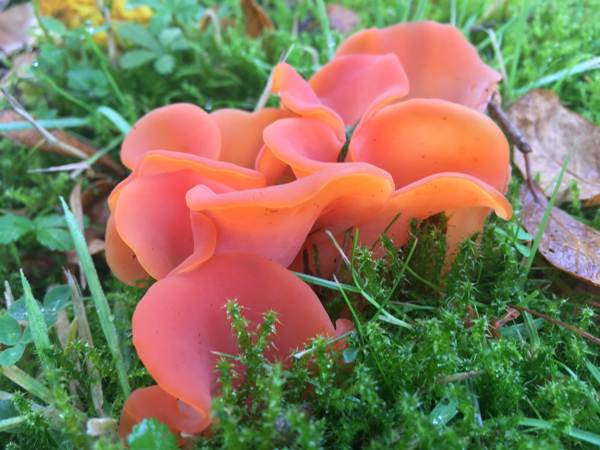
Guepinia helvelloides, commonly known as the Apricot Jelly Fungus, graces the forest floor with its distinctive appearance reminiscent of gelatinous apricot-colored fruit. This unique fungus belongs to the family Helvellaceae, and its fascinating characteristics make it a standout in the fungal kingdom.
The Apricot Jelly Fungus showcases a convoluted and folded structure, resembling wavy ribbons or folds of jelly. The color ranges from pale apricot to vibrant orange, adding a burst of warm hues to the woodland environment. Typically, it attains a modest size, with dimensions ranging from 5 to 15 centimeters in height.
These fungi are often found in coniferous and mixed woodlands, favoring damp and mossy environments. Their presence is particularly notable during late spring and early summer.
The Apricot Jelly Fungus stands as a delightful discovery for those appreciating the diverse and fascinating forms in the natural world.
Through this article, I hope to have provided you with interesting information about the “Colorful Mushrooms of Nature’s Beauty.” From brilliantly colored fungi to unique details about their shapes and habitats, we’ve had the opportunity to explore the diversity and marvels of the mushroom world.I trust that this information has enriched your knowledge about the distinctive beauty of colorful mushrooms in nature.


